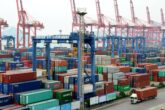
September 20, 2022
Under the Radar
Alternative Payment Systems and the National Security Impacts of Their Growth
Watch:
I. Introduction
Chairwoman Waters, Ranking Member McHenry, Subcommittee Chairman Himes, Subcommittee Ranking Member Barr, and the distinguished Members of the Subcommittee on National Security, International Development and Monetary Policy, thank you for the opportunity to testify before you on “Under the Radar: Alternative Payment Systems and the National Security Impacts of Their Growth.” It is an honor to share the panel with my fellow witnesses.1
My testimony will address China’s progress in building out alternative payment systems, the strategic implications of growth in China’s alternative payment systems, and recommendations for U.S. policymakers. The key conclusion of this testimony is:
At their current stages, China’s alternative payment systems are not threats to mainstream financial plumbing. However, these alternative payment systems are growing in technical sophistication and domestic adoption. China’s Cross-Border Interbank Payment System (CIPS) and the eCNY (electronic Chinese yuan, or digital yuan) are making strides. CIPS’ use is on an upward trajectory, and eCNY pilots are penetrating through all levels of Chinese society.
Under an ambitious People’s Republic of China (PRC) leadership that envisions more prominent roles for Chinese institutions in international finance, and with the right geopolitical winds, these systems could gain traction internationally and scale up accordingly. In such a scenario, Chinese alternative payment systems could eventually erode the effectiveness of U.S. and allied sanctions and challenge the institutions under the current financial order over the long run.
A summary of my recommended plans for action:
- Monitor the use, growth, and connectivity of these alternative payment rails with the rest of the world.
- Mandate U.S. government annual report on the use of the dollar in the context of global payment systems.
- Improve U.S. cross-border payments pipelines to make dollar transactions more efficient.
- Develop economic measures to restrict the advancement of alternative payment rails.
- Strengthen expertise in analyzing financial developments and statecraft.
- Draft a long-term strategy document (updated every two to four years) to signal the direction of U.S. financial statecraft and the administration’s thinking for the future of the dollar.
- Engage proactively in standard setting bodies for digital assets and financial rails.
Download the Full Testimony
- This testimony reflects the personal views of the author alone. As a research and policy institution committed to the highest standards of organizational, intellectual, and personal integrity, the Center for a New American Security (CNAS) maintains strict intellectual independence and sole editorial direction and control over its ideas, projects, publications, events, and other research activities. CNAS does not take institutional positions on policy issues and the content of CNAS publications reflects the views of their authors alone. In keeping with its mission and values, CNAS does not engage in lobbying activity and complies fully with all applicable federal, state, and local laws. CNAS will not engage in any representational activities or advocacy on behalf of any entities or interests and, to the extent that the Center accepts funding from non-U.S. sources, its activities will be limited to bona fide scholastic, academic, and research-related activities, consistent with applicable federal law. The Center publicly acknowledges on its website annually all donors who contribute. The author would like to thank Emily Kilcrease, Yaya Fanusie, Alex Zerden, Elina Ribakova, Rachel Ziemba, Matthew Johnson, Martin Chorzempa, and Jonathon Sine for their assistance in developing the ideas in this testimony. The recommendations and views in this testimony, along with any errors, are the responsibility of the author alone. ↩
More from CNAS
-
Tariffs and Tech: An Uncertain Recipe
Higher tariffs could prompt American cloud companies to shift more of their capital investments abroad....
By Pablo Chavez
-
How Do You Tariff a Movie and Liza Tobin on the Trade War with China
China expert Liza Tobin, managing director at Garnaut Global and new CNAS adjunct senior fellow, joins Emily Kilcrease and Geoffrey Gertz to discuss the ins and outs of the US...
By Emily Kilcrease, Geoffrey Gertz & Liza Tobin
-
Friendshore First, Trade War Second
Edward Fishman is the author of Chokepoints: American Power in the Age of Economic Warfare. Fishman is an adjunct senior fellow at the Center for a New American Security (CNAS...
By Edward Fishman
-
Trump's First 100 Days in Trade Policy
Emily and Geoff look back on the first 100 days of Trump’s trade policy, with a focus on how different parts of the U.S. political and economic system are reacting. They get i...
By Emily Kilcrease & Geoffrey Gertz



